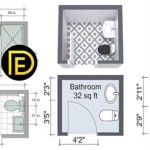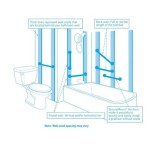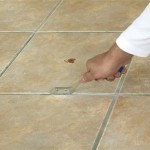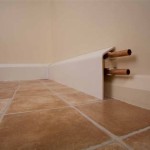How To Install Subway Tile In A Bathroom Shower
Subway tile is a classic choice for bathroom showers, offering a timeless elegance and practicality. This article will guide you through the steps of installing subway tile in your bathroom shower, equipping you with the knowledge and confidence to tackle this DIY project.
Preparation is Key
Before diving into the installation, meticulous preparation is paramount to ensure a successful and aesthetically pleasing outcome. This involves several crucial steps:
1.
Clear the area:
Remove all fixtures, showerheads, and other obstructions from the shower area. This will provide ample space for working and prevent accidental damage. 2.Prepare the substrate:
The surface where the tile will be installed must be smooth, clean, and free from imperfections. This may involve patching any cracks or holes, sanding down rough spots, and thoroughly cleaning the area with a suitable detergent. 3.Install backer board:
A layer of waterproof backer board, such as cement board, is essential for preventing water damage and providing a solid foundation for the tile. Ensure the backer board is properly attached to the studs or joists using waterproof adhesive and screws. 4.Install waterproofing membrane:
Apply a waterproof membrane over the backer board to further protect the shower area from water penetration. This membrane can be liquid-applied, sheet-based, or a combination of both, depending on your preference and project requirements. 5.Establish tile layout:
Plan the tile layout and determine the location of any cuts or adjustments needed to ensure a visually appealing and efficient installation. Consider factors such as the size of the tiles, the position of the showerhead, and the overall aesthetic you want to achieve. 6.Set up a tile cutting station:
Having a dedicated workspace for cutting tiles will streamline the process and enhance accuracy. This station should be equipped with a tile saw, a wet saw, or a tile cutter, depending on the type of tile and the complexity of the cuts required.Installing the Subway Tile
Once the preparation is complete, you can begin installing the subway tile. This stage requires care, precision, and adherence to the following steps:
1.
Apply thinset mortar:
Using a notched trowel, apply thinset mortar to the prepared substrate in sections, ensuring even coverage. The notch size of the trowel should be appropriate for the size and thickness of the tile being installed. 2.Position the first row:
Begin by installing the first row of tiles at the bottom of the shower area. Make sure the tiles are level and spaced correctly. Use spacers to maintain consistent grout lines. 3.Install subsequent rows:
Continue installing subsequent rows of tiles, ensuring they are aligned with the first row and spaced correctly. As you move up the wall, use a level to ensure the tiles are plumb and straight. 4.Cut tiles as needed:
Use a tile saw or tile cutter to cut tiles to fit around corners, fixtures, or any other obstructions. Ensure the cuts are clean and precise for a seamless finish. 5.Install tile around fixtures:
Carefully install tile around fixtures, making sure the tiles are properly aligned and sealed. Use caulking to create a waterproof seal between the tile and the fixture.Grouting and Finishing Touches
After the tile is installed, the next step is to grout the joints. This completes the look of the shower and seals the tile to prevent water infiltration. Follow these steps to ensure proper grouting:
1.
Clean tile surfaces:
Remove any excess thinset mortar and debris from the tile surface. This is crucial for a smooth and even grout application. 2.Mix and apply grout:
Mix the grout according to the manufacturer's instructions and apply it to the joints using a grout float. Ensure the grout is evenly distributed and fully fills the joints. 3.Clean excess grout:
After the grout has set slightly, use a damp sponge to clean up any excess grout from the tile surface. Be careful not to remove the grout from the joints. 4.Seal the grout:
Once the grout has fully cured, apply a grout sealant to protect the grout from water damage and staining. This will help to maintain the appearance and durability of the shower. 5.Install fixtures and trim:
Once the grout is completely dry, you can install any fixtures or trims, such as showerheads, soap dishes, or grab bars. Ensure these fixtures are securely fastened and sealed to prevent water leaks.Key Considerations
Installing subway tile in a bathroom shower is a significant project requiring attention to detail and adherence to best practices. These key considerations will help you achieve a successful and lasting outcome:
Choosing the Right Materials
The quality of the materials used will greatly impact the outcome of the project. Selecting high-quality tile, mortar, grout, and sealant is essential for durability and longevity. Consider the following factors:
Tile type:
Choose a tile that is specifically designed for wet environments, such as porcelain, ceramic, or glass tiles.Mortar strength:
Choose a mortar that is appropriate for the type of tile being installed. Be sure to consider the weight of the tile and the amount of moisture it will be exposed to.Grout type:
Select a grout that is specifically designed for wet environments and is water-resistant.Sealant type:
Choose a sealant that is compatible with the grout and the tile.
Safety Precautions
As with any DIY project, safety is paramount. Take the following precautions to minimize risks during the installation process:
Wear protective gear:
Always wear safety glasses, gloves, and a mask when working with tile, mortar, grout, and sealant.Use proper tools:
Use the appropriate tools for cutting and installing tile, and ensure they are in good working condition.Work in a well-ventilated area:
Ensure adequate ventilation when working with tile and grout to prevent exposure to harmful fumes.
Professional Assistance
While installing subway tile in a bathroom shower can be a rewarding DIY project, it is not without its challenges. If you lack the experience, tools, or confidence to complete the project successfully, consider seeking guidance from a professional tile installer. Their expertise can ensure a high-quality and lasting installation.

How To Install Subway Tile In A Shower Marble Floor Tiles Young House Love

10 Tips To Install Subway Tile In Your Bathroom

10 Tips To Install Subway Tile In Your Bathroom

8 Easy Steps For Diy Subway Tile Install Like A Pro

How To Install Subway Tile The Craftsman Blog

Installing Tile Smart Tips For Beginners

Subway Tile Shower Time Lapse Entire Project Start To Finish With Commentary

Installing Subway Tile In Our Victorian Bathroom Rehab Dorks

10 Tips To Install Subway Tile In Your Bathroom

Bathroom Renovation Tiling The Shower From Bathtub To Walk In Remodelando La Casa
Related Posts







